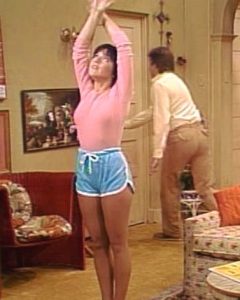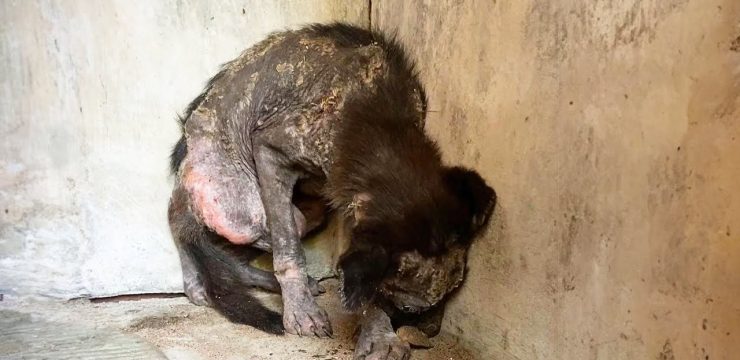For fans of classic television, Three’s Company holds a special place in their hearts. With its hilarious misunderstandings and unbeatable chemistry between cast members, the show became a staple of American sitcom history. Although John Ritter and Suzanne Somers have both passed away, their legacy lives on through reruns and unforgettable moments that continue to bring laughter to new generations. Recently, one particular scene from the show has gone viral, reigniting both fond memories and heated debates. But what is it about this old clip that has people so divided?

The show, which aired from 1977 to 1983, followed the misadventures of three roommates—two young women and a man—living platonically in Santa Monica. To keep their landlord at bay, Jack Tripper, played by John Ritter, pretended to be gay, which set up the premise for constant comedic confusion. Alongside Ritter were Joyce DeWitt as Janet and Suzanne Somers as Chrissy, creating a dynamic trio that audiences couldn’t get enough of.
The episode at the center of today’s buzz is “A Crowded Romance,” the fifth episode of Season 5. Written by Mark Tuttle and directed by Dave Powers, it originally aired on December 2, 1980. In the storyline, Larry, played by Richard Kline, thinks he’s met the love of his life and enlists Janet to send flowers to the woman. Janet then hands the task off to Jack. But when Jack meets her, he agrees she’s “the one”—and, without realizing it, starts dating the same woman as Larry. The love triangle that follows is packed with hilarious chaos and awkward misunderstandings, hallmarks of the series’ slapstick style.
What makes this episode particularly interesting isn’t just the plot, but the context behind it. It was the first episode taped for Season 5, though it didn’t air first. This episode also marks the beginning of Suzanne Somers’ absence from the show, though not for the reason many fans assume. In the summer of 1980, a strike involving the Screen Actors Guild and AFTRA delayed TV production. Suzanne had already booked a live show at the MGM Grand in Las Vegas for September and October. When the strike ended and taping resumed in October, her performance schedule clashed with filming. To avoid conflict, producers wrote her out of “A Crowded Romance” and bumped the air date to later in the season. Ironically, by the time it aired, her contract dispute had already begun, which led to her eventual departure from the show.
Somers’ dispute was a bold move at the time. She demanded a raise from $30,000 to $150,000 per episode, seeking equal pay with John Ritter. In 1981, the topic of pay equity wasn’t widely discussed, and her request was seen as controversial. Ultimately, she was fired, later telling The New York Times that she played the “dumb blonde” so convincingly, she never received credit for her performance. She believed she deserved more—and she wasn’t afraid to say so.
Back to “A Crowded Romance”—without Suzanne Somers, Joyce DeWitt steps up and truly shines as Janet. Dressed in her signature blue shorts and pink blouse, Janet becomes the heart of the episode. The chemistry between DeWitt and Ritter is undeniable, proving just how essential they were to the show’s success. One scene in particular has everyone talking again, for better or worse.
In this moment, Janet urges Jack to do some wake-up exercises. Jack jokes that he’s already done “20 hair combs and two sets of teeth brushing,” claiming he doesn’t want to overtrain. Then, in a move that has drawn both laughter and criticism, Jack gives Janet a playful nudge on the backside. She responds with mock annoyance, saying, “I hate when you do that.”
While the scene was played for laughs in the 1980s, it has sparked a new wave of conversation online—especially among TikTok users. Some found it nostalgic and funny, while others viewed it as crossing a line. One commenter noted, “I haven’t watched this since I was a kid, never realized how inappropriate Jack was! 🤣” Another said, “It was funny stupid humor! Unfortunately gone today 😔.” Still, others criticized the scene harshly, calling it inappropriate by today’s standards and labeling Jack’s behavior as predatory.
This controversy reflects a broader cultural shift. In the past, sitcoms often relied on gender stereotypes and suggestive humor, with little concern for boundaries or implications. But in today’s climate, awareness of workplace conduct, gender equality, and respect has reshaped what’s acceptable in comedy. What once seemed like harmless fun is now scrutinized through a more critical lens.
Interestingly, the viral clip has also led to a lighter discussion: did Jack and Janet have the same haircut? Fans couldn’t help but notice that their hairstyles in the episode looked strikingly similar. Joyce DeWitt’s hair, especially during the mid-seasons, was a frequent topic among fans. Many loved the full, shiny look she had during Seasons 4, 5, and 6. Others had mixed feelings about her longer hairstyles in later seasons. Her original cut was even compared to the famous “Dorothy Hamill” wedge, which was a trendsetter in the ’70s thanks to the Olympic figure skater.
So who was behind DeWitt’s iconic hair? Credit goes to New York hairstylist Harry King, who created her light, layered style. He gave her short, even layers that were easy to maintain and had a carefree look. The result was a flattering, low-maintenance hairstyle that fans loved—and tried to copy.
One last point that fans couldn’t help but debate? A potential blooper. In the episode, some viewers thought they spotted the top of the set in a shot. While it appeared to be a filming mistake, others defended it as just a part of the retro set design. With so many episodes under its belt, small moments like these continue to delight eagle-eyed viewers.
Whether you’re laughing at the antics, critiquing the comedy through a modern lens, or simply admiring Janet’s timeless hairstyle, Three’s Company remains a show that keeps people talking. It’s proof that even decades later, sitcoms from television’s golden era still have the power to spark conversation, stir nostalgia, and shine a light on how far we’ve come.





